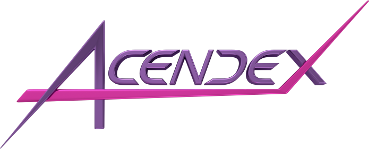Government agencies at all levels are increasingly adopting technology to improve public services and modernize operations. However, the unique challenges and responsibilities of the public sector require customized IT solutions that move beyond conventional business products.
Government entities serve citizens rather than customers, manage massive sensitive datasets, operate under strict regulations and compliance rules, and aim to be transparent stewards of taxpayer funds. Legacy systems, risk aversion, and internal bureaucracy can also impede digitization, complicating the process of procuring and deploying new technologies.
 While technology itself does not inherently make services more citizen-centric, purpose-built government IT solutions allow agencies to leverage cutting-edge advancements responsibly. Offerings like secure cloud platforms, constituent portals, automation, and cybersecurity can equip the public sector to enhance internal processes as well as provide effective, convenient access to entitlements and documents.
While technology itself does not inherently make services more citizen-centric, purpose-built government IT solutions allow agencies to leverage cutting-edge advancements responsibly. Offerings like secure cloud platforms, constituent portals, automation, and cybersecurity can equip the public sector to enhance internal processes as well as provide effective, convenient access to entitlements and documents.
As government operations grow more complex, partnering with IT providers specialized in the public sector’s unique privacy, security, and community expectations allows cash-strapped agencies to innovate securely. This blog explores the intricate landscape of government IT systems and service providers working to balance innovation with responsible, human-focused values.
Addressing Government IT Challenges
From federal agencies to state organizations and local municipalities, government entities at every level face unique IT challenges. Though specific environments vary, some key focus areas are consistent across the public sector.
- Managing Data and Security: With responsibility over vast amounts of constituent data spanning health records, financial information, legal documents, and more, storage and security are top priorities. Cloud services offer scalable options for data management while companies specializing in government security provide layered cyber protection.
- Regulatory Compliance and Responsible Information Sharing: Extensive legal information and regulated data workflows create complex IT environments needing to balance transparency and privacy. Using dedicated solutions for data rights management and access controls can ease compliance.
- Budget Limitations and Procurement Processes: Public sector agencies operate on tax dollars, so funding constraints are a given. This affects continuity around rolling out large-scale IT improvements with government procurement rules creating additional red tape. Services tailored for the public sector smooth workflows.
- Legacy Systems and Change Management: Transitioning manual processes into digital environments or revamping outdated software risks workflow disruption across interconnected government bodies sharing data. Gradual pilots, customized training, and engaging all stakeholders ensure smoother adoption of new solutions.
With the rise of digital transformation, agencies recognize technology’s value but have limited windows for experimentation. Government IT providers mitigate common risks around security, service continuity, and stakeholder alignment during complex deployments.
Key Areas for Government IT Solutions
While core challenges may be consistent, the range of technologies supporting public sector modernization continues advancing rapidly. Some key domains seeing focused innovation include:
- Cloud Services: Cloud platforms allow government entities to store citizen data securely while availing improved redundancy and disaster recovery safeguards crucial for uninterrupted delivery of services. Cloud also facilitates scalable computing power to handle batch processing tasks like payroll, tax preparations, and more.
- Citizen Experience Transformation: Through online portals, mobile apps, and unified platforms, agencies can integrate information and services from various programs onto convenient digital interfaces. This reduces visitor foot traffic in government offices and field staff workload.
- Automation and AI: Chatbots handling common constituent queries, machine learning algorithms combing through legal information for pattern detection, and robotic process automation assisting field inspectors all alleviate pressure on government staff. AI also aids evidence-based policy making.
- Cybersecurity: Multi-layered security solutions combining next-gen firewalls, threat intelligence feeds, endpoint protection suites, user access controls, and robust audit trails help safeguard sensitive government data per strict regulatory standards.
- Managed IT Services: Specialized managed service providers can set up, maintain, and support technology infrastructure in government organizations without them having to hire more in-house technical staff.
In addition to cutting-edge technology implementations, government IT partners provide the continuity planning, change management guidance, and talent development required to sustain new capabilities implemented in complex public sector settings.
Spotlight on Digital Transformation
 While innovative technologies offer solutions across focus areas, digital transformation ties these capabilities together through enterprise-wide modernization. More than just enabling isolated systems, digital transformation in government coordinates top-down and bottom-up efforts to integrate services, streamline workflows, and continuously drive technology adoption holistically.
While innovative technologies offer solutions across focus areas, digital transformation ties these capabilities together through enterprise-wide modernization. More than just enabling isolated systems, digital transformation in government coordinates top-down and bottom-up efforts to integrate services, streamline workflows, and continuously drive technology adoption holistically.
True transformation requires process re-engineering spanning policy, legislation, and organizational culture – not just IT upgrades. It also invariably involves change management challenges. However, demonstrations of clear benefits help secure buy-in and momentum.
These include:
- Improved Transparency and Civic Engagement: Digital portals connecting citizens directly to legislative records, municipal budgets, and local elected officials promote pluralism. App-based two-way communications also enable more inclusive public consultations around new policies.
- Enhanced Operational Efficiency: Transitioning time-consuming manual tasks around records requests, permit approvals, and more to automated workflows powered by process re-engineering boosts staff productivity significantly. Other benefits range from paperwork reduction to space utilization per digitized storage.
- Compliance and Reporting: Digital systems inherently create audit trails tracking information requests, data access logs, and operational metrics. This eases regulatory compliance while also generating insights, forensics data, and reports to guide decisions.
For true transformation, technology serves as an enabler rather than an outcome. Government IT solutions providers who recognize this focus both on cultural change management as much as systems integration during complex modernization initiatives under fiscal constraints.
The Future of Government IT
Technology will continue advancing at exponential rates while citizen expectations of government services will keep rising. For public agencies, this creates tremendous opportunity along with added pressures. Government IT solution providers can help navigate challenging transitions through purpose-built offerings aligning innovations with public sector needs and constraints.
Key takeaways for government agencies looking to leverage IT partners include:
- Seek industry expertise beyond conventional tools to address unique security, compliance, and continuity needs.
- Insist on change management guidance during implementations to drive adoption across stakeholders.
- Ask for staff capability building support via training programs that transfer knowledge.
- Demand evidence of transparent public sector success based on robust case studies.
- Validate cost structures incentivize long-term service quality over upfront customization fees.
As public scrutiny around government functioning increases, technology plays a dual role – streamlining operations through automation while also making agencies more transparent and accountable. The right solutions and strategic partnerships empower public sector leaders to serve citizens better through effective, responsible, and citizen-centric adoption of innovation. Rather than getting mired in overpromises, the future lies in prudent digitization and human-centered technology co-existence.

